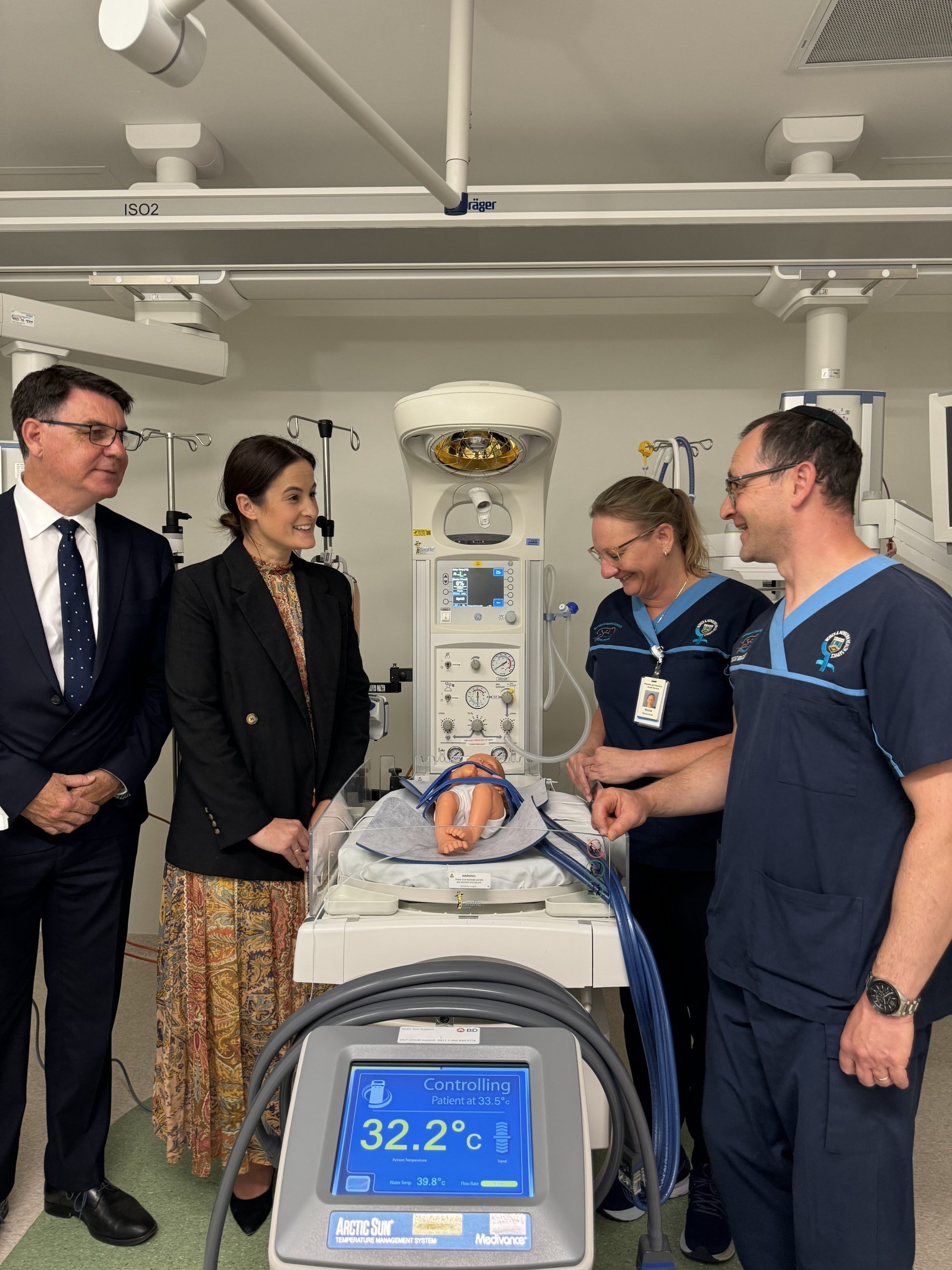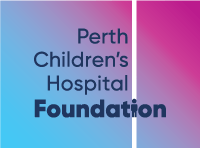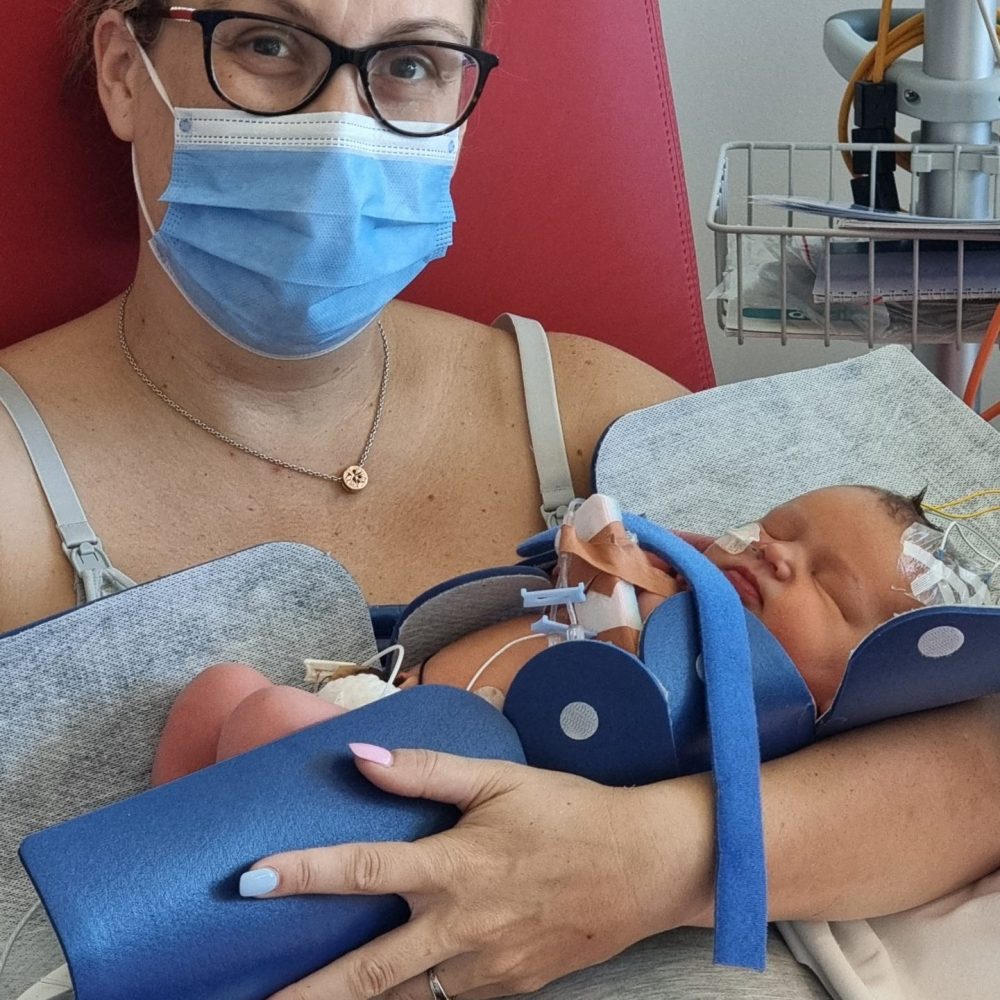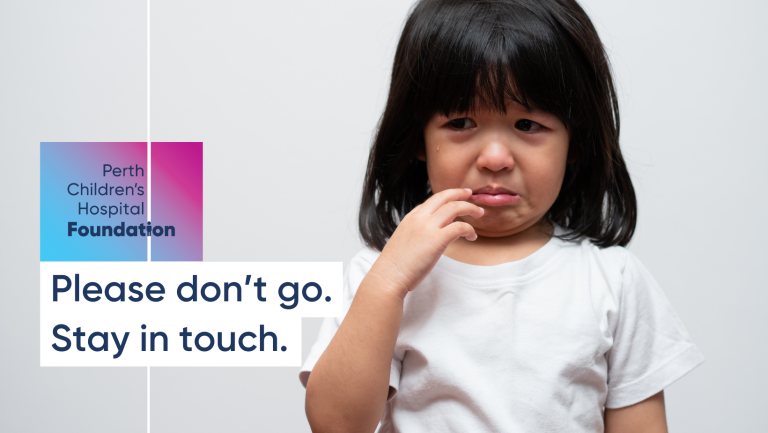
Just chilling: Improved cooling equipment for at-risk newborns.
- Perth Children's Hospital Foundation
Just chilling: Improved cooling equipment for at-risk newborns.
- Perth Children's Hospital Foundation
New state-of-the-art cooling equipment at King Edward Memorial Hospital (KEMH) is helping more WA newborns affected by lack of oxygen during birth to access life-changing ‘hypothermia treatment’.
The Arctic Sun Temperature Management System – funded by PCHF, thanks to support from Principal Partner Mineral Resources (MinRes) via Channel 7 Telethon Trust – is used to treat babies 35 weeks and above diagnosed with hypoxic-ischaemic encephalopathy (HIE).
If left untreated, HIE can result in life-long consequences, including damage to the brain and disabilities such as cerebral palsy.
To improve long-term survival and reduce the incidence and severity of disability, it is best practice for babies with moderate or severe HIE to receive cooling therapy.
KEMH Nurse Director Debbie Chiffings said that each year, up to 50 babies across the state were diagnosed with HIE and would require cooling.
“The Arctic Sun provides a non-invasive, targeted method to cool newborns through a series of chilled water pads which are applied to the skin,” she said.
“With staff able to control babies’ body temperatures more accurately, we can give these vulnerable newborns the best chance of surviving, as well as reducing both the severity and the overall risk of sustaining a life-changing brain injury.
“In addition, it’s also more family friendly, as in some circumstances, parents can touch and hold their baby while it’s being cooled, which just wasn’t possible with older models.”
Perth sisters Lilly (6) and Scarlett (1) both required hypothermia treatment on cooling mats shortly after birth.
“You just hope for a normal, natural birth the first time around, but with Lilly it was a bit more complicated,” said mum, Jenny Edwards.
After experiencing distress in the womb, Lilly wasn’t breathing for up to four minutes after she was born. She was taken straight to Princess Margaret Hospital and medical staff were concerned she may have sustained brain damage.
“I honestly didn’t think she was going to make it,” mum Jenny said.
Lilly was placed on a cooling mat for almost a week, with Jenny unable to touch or cuddle her while her temperature was lowered.
Five years later, Jenny was awaiting the birth of her second daughter, Scarlett. She arrived at hospital early, as she hadn’t felt baby Scarlett moving for several hours. Scarlett was also experiencing distress in the womb and was not breathing.
“I just couldn’t believe it happened twice,” said Jenny. “However, during those five years, the technology advanced so much. The cooling mat was amazing this time around because I could hold my baby. It just made such a difference.
“Lilly is now six and is doing well at school. Scarlett is still being monitored for any abnormal brain activity, but she’s doing everything a baby her age should be doing, and I have no concerns. If the cooling therapy wasn’t available at the time, who knows where we would be today.”
MinRes Company Secretary Jenna Mazza said: “MinRes is proud to partner with PCHF and Telethon to ensure more vulnerable WA newborns have access to Arctic Sun cooling therapy.
“King Edward Memorial Hospital is a cornerstone of the WA community, and this state-of-the-art equipment will help clinicians give babies the best chance at a healthy life.”
PCHF CEO Carrick Robinson said: “By expanding access to therapeutic hypothermia treatments, we can make a life-changing impact on the lives of some of our state’s most vulnerable newborns.”


